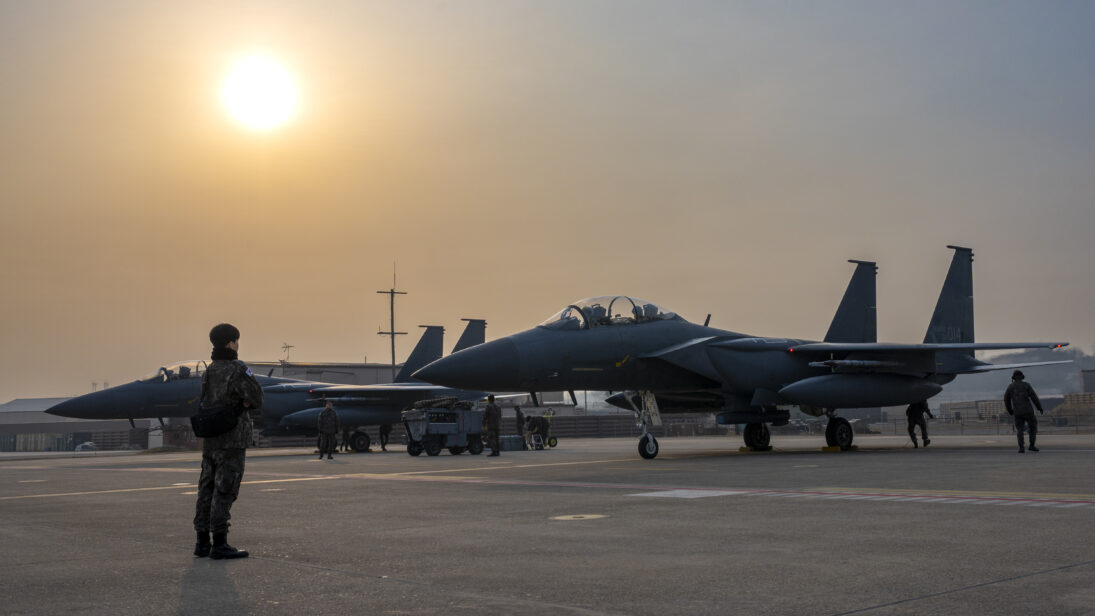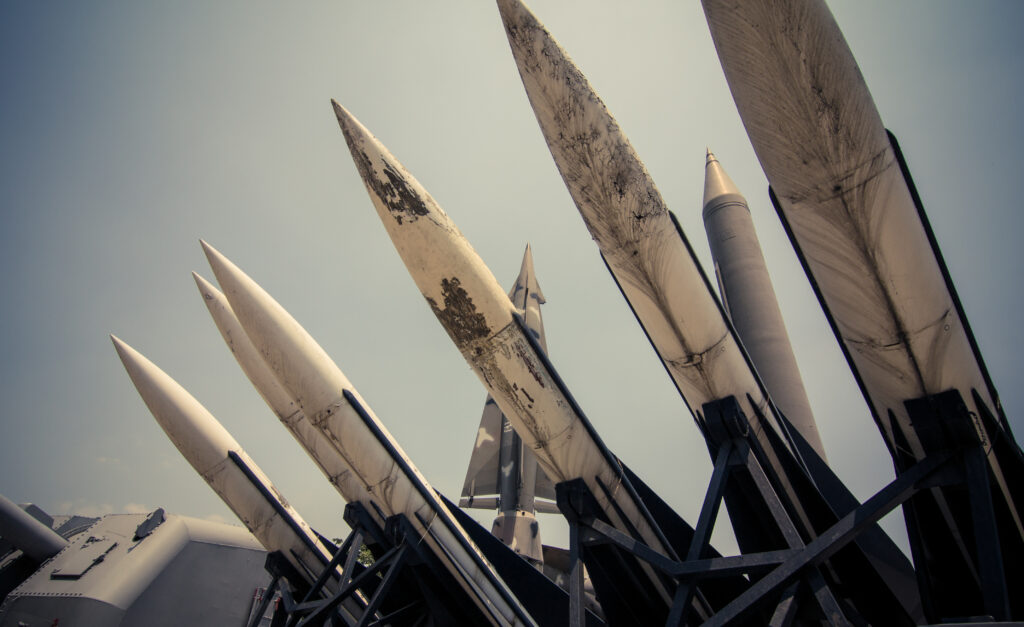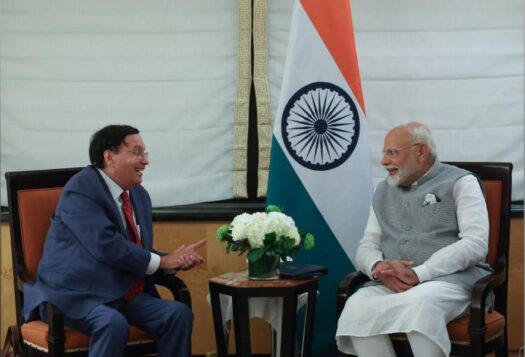
This piece was co-published as a part of a series with 38 North, a publication of the Henry L. Stimson Center.
Earlier this year, South Korea’s President Yoon Suk-Yeol said his country could build nuclear weapons if the security situation with North Korea continues to get worse. Amid increased weapons testing by North Korea, his statement was the first time this option has been discussed at the presidential level and is one of the most direct references to Seoul’s growing consideration of a nuclear future. Yoon’s remarks were unprecedented and spoke to the strong public sentiment in favor of South Korea having independent nuclear forces. That said, studies show that South Koreans are also confident that the United States will make good on its nuclear commitments, which undergird its alliance with South Korea. Moreover, South Korean officials walked back Yoon’s comments, arguing that, if necessary, U.S. nuclear weapons can be used against North Korea.
Moreover, months after Yoon expressed these views, South Korea signed the Washington Declaration, reiterating full confidence in U.S. extended deterrence and recommitting to its own commitments under the Nuclear Nonproliferation Treaty. This renewed impetus and goodwill in Seoul-Washington ties can be gleaned from Yoon’s characterization of his country’s alliance with Washington as a nuclear-based one.
It should be clear that Seoul has not made any decision to go down the nuclear path. However, the changing nuclearization debate in South Korea is important and needs to be parsed. If Seoul were to become a nuclear state, a Pyongyang-Seoul nuclear dyad would emerge on the Korean Peninsula. Such a dyadic relationship, much like the one between nuclear rivals in Pakistan and India, could be acrimonious and volatile.
With South Korea linking the potential acquisition of nuclear weapons to the security threats it faces from North Korea, it is instructive to look at how the South Asian nuclear dyad has fared over the past 25 years. From this, two concomitant lessons for South Korea emerge. First, nuclear weapons will not have a revolutionary effect on the peninsula, as the security dilemma is likely to increase, not decrease, between the two Koreas. Second, while the acquisition of nuclear weapons might deter North Korea from reunifying the two Koreas by use of force, it will not outlaw destabilizing actions with nuclear undertones by both sides.
No Nuclear Revolution in Sight
One of the foremost lessons South Korea should draw from the India-Pakistan nuclear dyad is that the possession of nuclear weapons will not eliminate the security dilemma on the Korean Peninsula. The security dilemma, wherein a more secure South Korea instills insecurity concerns in North Korea, will remain a significant and enduring phenomenon. In other words, the theory of the nuclear revolution, which suggests that veritable mutual vulnerability will stabilize nuclear rivalries, may not hold for the two Koreas.
While the acquisition of nuclear weapons might deter North Korea from reunifying the two Koreas by use of force, it will not outlaw destabilizing actions with nuclear undertones by both sides.
Certainly, the South Asian nuclear equation speaks compellingly to the inherent flaws in this theory. In an event hosted by the Stimson Center, the speakers discussed how both Pakistan and India sought to obtain greater stability through nuclear weapons; however, this has not been the case. Despite completing their nuclear deterrents, their relations have been far from stable. Crises and near-crises have been prominent features in South Asia. From the 1999 Kargil Conflict to the 2019 Pulwama-Balakot Crisis, nuclear-tinged crises between the two countries have become more dangerous, complex, and difficult to manage. In fact, the proclivity to use force, especially in India, has increased over the years, despite both adversaries having nuclear weapons. This is evidenced by how the Pulwama-Balakot Crisis panned out, with India launching airstrikes on mainland Pakistan.
None of what has happened in South Asia after its overt nuclearization can be explained by the theory of nuclear revolution. If anything, since 1998, efforts have been made to increase space for limited wars to occur at the lower end of the conflict spectrum. India’s highly touted Cold Start Doctrine (CSD), which aims at not only launching quick and deep strikes on Pakistani cities, but also causing attrition to its armed forces, was perceived as an effort to explore a range of kinetic options below the nuclear threshold. If the nuclear revolution theory held in South Asia, this space below the nuclear threshold would not have been exploited.
Debates inside South Korea suggest a strong belief that obtaining nuclear weapons to balance out North Korea’s nuclear capabilities will deter the outbreak of crises on the Korean Peninsula. However, given India and Pakistan’s experience as a nuclear dyad, nuclear weapons can actually make both countries more belligerent and amenable to using force under a nuclear overhang.
To North Korea’s leader, Kim Jong Un, a nuclear-armed South Korea will make his regime’s use of force against the latter more costly. Kim would likely be uneasy with the potential emergence of mutual vulnerabilities stemming from the South’s nuclearization. It must be stressed that this type of situation may cause him to take actions that may increase the risks and chances of escalation. South Korea, for its part, might also feel emboldened and secure to the point where it could find North Korea’s conventional superiority easier to navigate. Moreover, North Korea is likely to use a South Korean nuclear arsenal as a pretext to further expand and modernize its own arsenals, exacerbating the nuclear arms race on the peninsula.

Nuclear Weapons: A Deterrent for Reunification?
If South Korea goes nuclear, reunifying the two Koreas through the use of force will become an extremely dangerous proposition. This is primarily because mutual vulnerabilities will set in and have a deterrent effect on both Seoul and Pyongyang. To better understand this dynamic, looking at the example of India and Pakistan is necessary. While the addition of nuclear weapons to South Asia’s security mix has not stabilized India-Pakistan relations, it has deterred full-scale conventional wars between the two rivals. Further, the presence of nuclear weapons has affected changes in the crisis behaviors of both India and Pakistan.
Since 1998, when India and Pakistan went overtly nuclear, the way both countries responded to crises has been notably more limited than before they were in possession of nuclear weapons. For example, India’s response to Pakistan in Kargil was limited and less escalatory than its retaliation to the latter’s kinetic operations in the Indo-Pak War of 1965. Similarly, Pakistan’s response to India’s air attack on Balakot in 2019 was driven by the need to show restraint. This is evidenced by the fact that Pakistan’s retaliatory strikes were not directed against any military or civilian targets. Moreover, territories have not changed hands, nor have large-scale operations been witnessed between the two countries since they went nuclear.
All this makes it abundantly clear that, under a nuclear overhang, the use of force can only do so much when it comes to revising the territorial status quo. Indeed, neither India nor Pakistan can militarily solve its festering dispute over Kashmir without risking a nuclear exchange. This is one of the reasons why India’s revocation of Kashmir’s special status in 2019 did not lead to a military confrontation between the two countries.
If South Korea chooses to develop nuclear weapons, it could potentially serve as a deterrent against a large-scale conflict with North Korea.
The continuation of this de facto status quo in Kashmir is the only part of the nuclear revolution theory that applies to South Asia. That said, whether or not it remains intact going forward is an important question that currently has no definite answer. While India’s government has vowed to wrest back territories from Pakistan, doing so could prove to be suicidal, given that the latter has a robust nuclear deterrent in its armory. The same is likely to be the case on the peninsula. As previously mentioned, Pyongyang’s freedom of action may be curtailed if Seoul bares its teeth, thereby making it harder for the former to forcibly reunify the peninsula. The same would also apply to a strengthened, confident and independently nuclear South Korea. The Demilitarized Zone (DMZ) and the Line of Control (LoC), which partitions the disputed Kashmir region between India and Pakistan, both present formidable challenges. Pushing back against the DMZ can be as demanding as pushing back against the LoC.
Conclusion
As demonstrated by South Asia’s experiences with India and Pakistan, the possession of nuclear weapons by the two rivals has not attenuated their security dilemma. In some cases, nuclear weapons have encouraged both sides to engage in low-level conflict, while in others, they have led to some level of restraint in the application of force. On balance, the nuclearization of South Asia has prevented territorial grabs from both sides, as evidenced by how all the post-1998 crises terminated without any revisions in territory.
Hence, if South Korea chooses to develop nuclear weapons, it could potentially serve as a deterrent against a large-scale conflict with North Korea. It is crucial, however, to recognize that the acquisition of nuclear weapons by South Korea will not diminish the complexity posed by Kim Jong Un. This is primarily due to his persistent efforts to leverage vulnerabilities in his favor while maintaining the delicate balance of power.
Also, acquiring nuclear weapons may result in the elimination of Washington’s extended deterrence, leaving Seoul to deal with Pyongyang on its own. While strengthening bilateral crisis management mechanisms is important, a lot of effort will be needed for both Koreas to terminate any kind of nuclear-laden crises on their own. It is possible that both sides might be more risk-acceptant. For example, they could, like India and Pakistan, look to find spaces for brinkmanship, something that could lead to miscalculations. This is primarily because, like the Kashmir conflict, the issue of Korea’s reunification will continue to play on the minds of leaders in Seoul and Pyongyang. And, as in the case of South Asia, unresolved conflicts will continue birthing crisis triggers. It may also cost Seoul its alliance with Washington altogether, which would have a whole different set of implications for South Korea’s security. This prospect of South Korea going nuclear could also trigger significant concern from another regional heavyweight, Japan. This is especially true considering Japan’s staunch commitment to nuclear nonproliferation. Consequently, these developments have the potential to give rise to increased tensions within the region, albeit likely only in the short term. It can, therefore, be argued that there is no guarantee that a nuclear dyad would improve the security situation on the Korean peninsula and is unlikely to help maintain stability there.
Also Read: South Korea’s New Foreign Policy: Opportunities for India.
***
Click here to read this article in Urdu.
Image 1: Republic of Korea Air Force personnel prepare a F-15 K Slam Eagle via Flickr.
Image 2: Korean Missiles via Flickr


